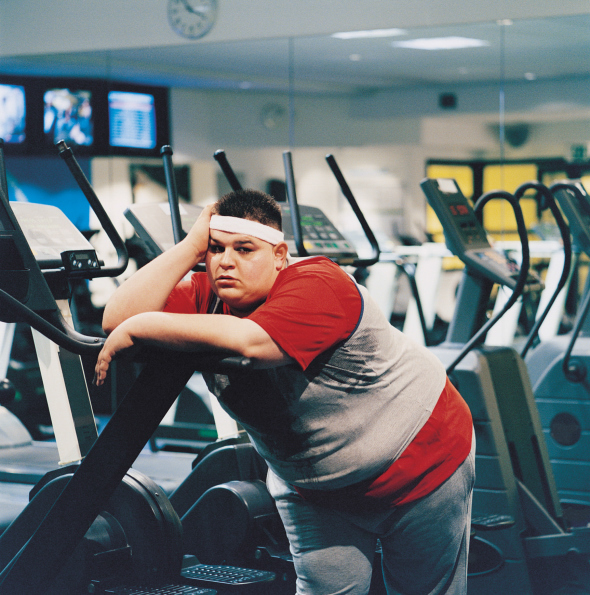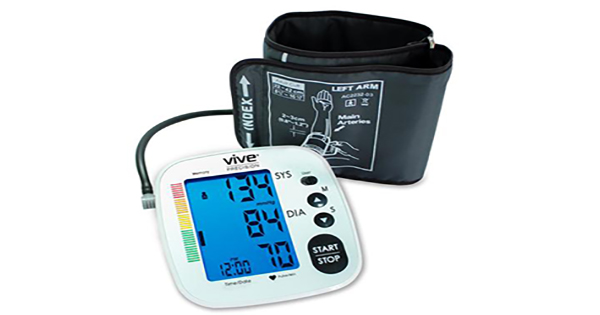Boost Heart Health with High Intensity Interval Training

Short bursts of high intensity interval training may provide a more realistic alternative for preventing and managing Type 2 diabetes, as well as promoting weight loss, according to a paper published in Obesity Reviews.
This was a meta-analysis, meaning researchers searched databases to review multiple studies examining the effects of high-intensity interval training (HIIT) on specific health parameters. In this case, 50 studies were included in the research, paying particular attention to insulin resistance, blood glucose, hemoglobin A1c, body weight, and cardiorespiratory fitness.
Researchers found short bursts of vigorous activity in quick succession to be more “effective” when compared to longer forms of exercise in regards to how the body uses and stores blood sugar.
A majority of individuals diagnosed with type 2 diabetes are also classified as overweight or obese. Type 2 diabetes impacts your entire body: vision, kidneys, heart, etc. If you have high triglycerides, this is an indicator for greater risk for developing type 2 diabetes.
Treatment plans for type II diabetes, high triglycerides, and weight management included diet and physical activity.
The effects of exercise on the body’s insulin sensitivity and ability to utilize blood sugar are well proven. The effects of exercise on weight management is debatable.
Continue reading
Home Blood Pressure Monitor: A Review
 Monitoring blood pressure at home is one step you can take to supplement clinic monitoring for a more complete representation of your typical blood pressure throughout the day.
Monitoring blood pressure at home is one step you can take to supplement clinic monitoring for a more complete representation of your typical blood pressure throughout the day.
There are a wide variety of blood pressure monitors available. The American Heart Association, American Society of Hypertension, and Preventive Cardiovascular Nurses Association all recommend upper arm devices for greater accuracy. Avoid wrist and finger monitors.
When purchasing a home blood pressure monitor, it’s important you consult with your doctor or medical supply company to ensure you select an appropriate cuff size.
Vive Precision Blood Pressure Monitor
ViveHealth.com gifted me with a Vive Precision Blood Pressure Monitor along with compensation to review this device. That being said, all opinions in this review are my own.
The Vive blood pressure monitor comes with a large, easy to read display and is battery or AC power compatible. The product I received came packaged with the four AAA batteries needed. It did NOT come with the AC adapter. Looks like it requires a standard DC V6 adapter. I do like battery operated… one less cord to wrangle and the device notifies you if the battery power is getting low.
How to Monitor Blood Pressure at Home
 High blood pressure is diagnosed when blood pressure is consistently equal to or greater than 140 mm Hg/90 mm Hg.
High blood pressure is diagnosed when blood pressure is consistently equal to or greater than 140 mm Hg/90 mm Hg.
According to the Centers for Disease Control and Prevention about 70 million adults are diagnosed with high blood pressure. This is equal to about 1 out of every 3 adults in this United States.
Blood pressure diagnosis is often based on clinic blood pressure readings. This is problematic due to a variety of factors resulting in inaccurate readings. Some factors that impact blood pressure accuracy include adequate rest period prior to blood pressure measurement, cuff size appropriate for arm circumference, and cuff deflation rate. Additional challenges to the clinic settings is whether or not the reading reflects the normal blood pressure level when outside the clinic setting. Many suffer from what is termed “white coat hypertension” where blood pressure rises in response to the medical environment.
Monitoring blood pressure at home is one step you can take to supplement clinic monitoring for a more complete representation of typical blood pressure levels.
A Joint Scientific Statement from the American Heart Association (AHA), American Society of Hypertension (ASH), and Preventive Cardiovascular Nurses Association (PCNA) encourages increased regular use of self-monitoring blood pressure for the majority of patients with hypertension to increase patients’ engagement and ability to manage their blood pressure, as well as enable the care team to provide appropriate and timely treatment.
Take these steps to monitor blood pressure at home:
Continue reading
Types of Blood Pressure Medications
 Many high blood pressure medications are available. Most options fall within these eight categories.
Many high blood pressure medications are available. Most options fall within these eight categories.
Diuretics
You may also hear diuretics called “water pills”. They increase the elimination of sodium and water by the kidneys. This decreases blood vessel fluid volume, which reduces pressure against artery walls, thereby lowering blood pressure.
The three classes of diuretic drugs include thiazide, loop, and potassium-sparing.
Examples of diuretics include:
- Chlorothiazide (Diuril)
- Hydrochlorothiazide (Microzide)
- Furosemide (Lasix)
- Bumetanide
- Amiloride
- Eplerenone (Inspra)
Beta-blockers
This drug category may also be called beta-adrenergic blocking agents. Beta-blockers inhibit the effects of the hormone epinephrine (aka adrenaline), resulting in a slower, less forceful heartbeat. Beta-blockers can also promote vasodilation (i.e. widening of the blood vessels). These two actions results in reduced blood pressure.
Examples of beta-blockers include:
- Acebutol (Sectral)
- Atenolol (Tenormin)
- Metoprolol (Lopressor, Toprol-XL)
Where should heart rate after exercise fall?

Heart rate after exercise may be used as an indicator of your heart fitness.
Normal resting heart rate
According to the National Institute of Health, normal average resting heart rate should be:
- 60 – 100 beats per minutes for children 10 years and older, as well as adults/seniors
- 40-60 beats per minute for well-trained athletes
Target heart rate during exercise
For moderate intensity activities your target heart rate is 50 – 69% maximum heart rate. For vigorous activity levels your target heart rate is 70-85% maximum heart rate.
To calculate your target heart rate subtract your age from 220. This gives you your maximum heart rate. Now, multiple your maximum heart rate by 0.5 and 0.69 to obtain your target heart rate range for moderate intensity activities. Multiply your maximum heart rate by 0.7 and 0.85 to obtain your target heart rate range for vigorous activities.
Depending on your goal intensity – moderate vs. vigorous – your heart rate should fall within your target heart rate range during activities.
If you are typically inactive, set your goal for the lower end (50-60% maximum heart rate) and work your way up over time.
There are blood pressure medications that lower maximum heart rates. Discuss with your doctor if you currently take blood pressure medications. Your target heart rate zone may need to be adjusted.
Continue reading
Is it now considered okay to eat saturated fat from butter and tropical oils?
![saturated-fat[1]](https://www.lisanelsonrd.com/wp-content/uploads/2016/07/saturated-fat1.jpg) It’s no wonder so many of us are confused about healthy eating. Even the nation’s dietary experts keep changing their mind about what we should eat and what we should avoid. We asked USC School of Pharmacy Research Professor Roger Clemens to help remove some of the confusion surrounding healthy fats.
It’s no wonder so many of us are confused about healthy eating. Even the nation’s dietary experts keep changing their mind about what we should eat and what we should avoid. We asked USC School of Pharmacy Research Professor Roger Clemens to help remove some of the confusion surrounding healthy fats.
Q: What are the latest dietary guidelines regarding fat and cholesterol?
Dr. Clemens: The 2015 Dietary Guidelines Advisory Committee Scientific Report states that cholesterol is no longer a nutrient of concern. The available evidence shows no appreciable relationship between consumption of dietary cholesterol and serum cholesterol. This is consistent with the conclusion of the American Heart Association and American College of Cardiology report.
Q: Can you explain this change in thinking over the past several decades?
Dr. Clemens: Nutritional science is dynamic. In the 1980s, the Dietary Guidelines suggested consumers avoid too much total fat and saturated fat. Over time, total fat guidelines have been upwardly adjusted with the 2010 Guidelines suggesting diets with up 35 percent of daily calories from fat. The 2015 executive summary suggests no upper limit for total fat consumption. Saturated fat guidelines have similarly evolved and now suggest including up to 10 percent in a healthy diet, and replacing saturated fat with polyunsaturated and mono-unsaturated fat. This thinking may still be changing, however. Current evidence does not clearly support cardiovascular guidelines that encourage high consumption of polyunsaturated fatty acids and low consumption of total saturated fats.
Continue reading



